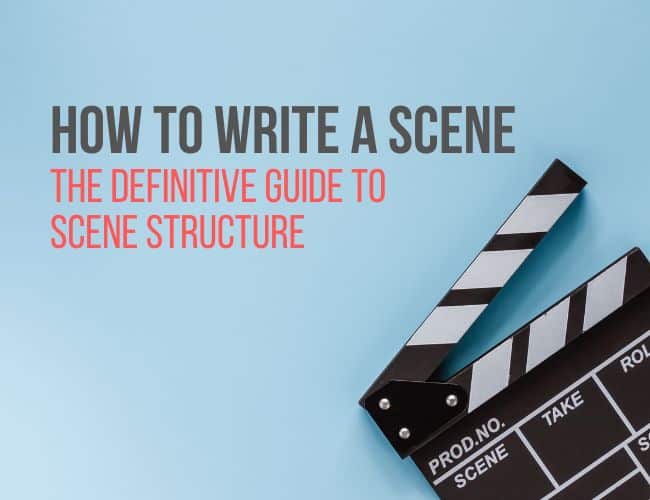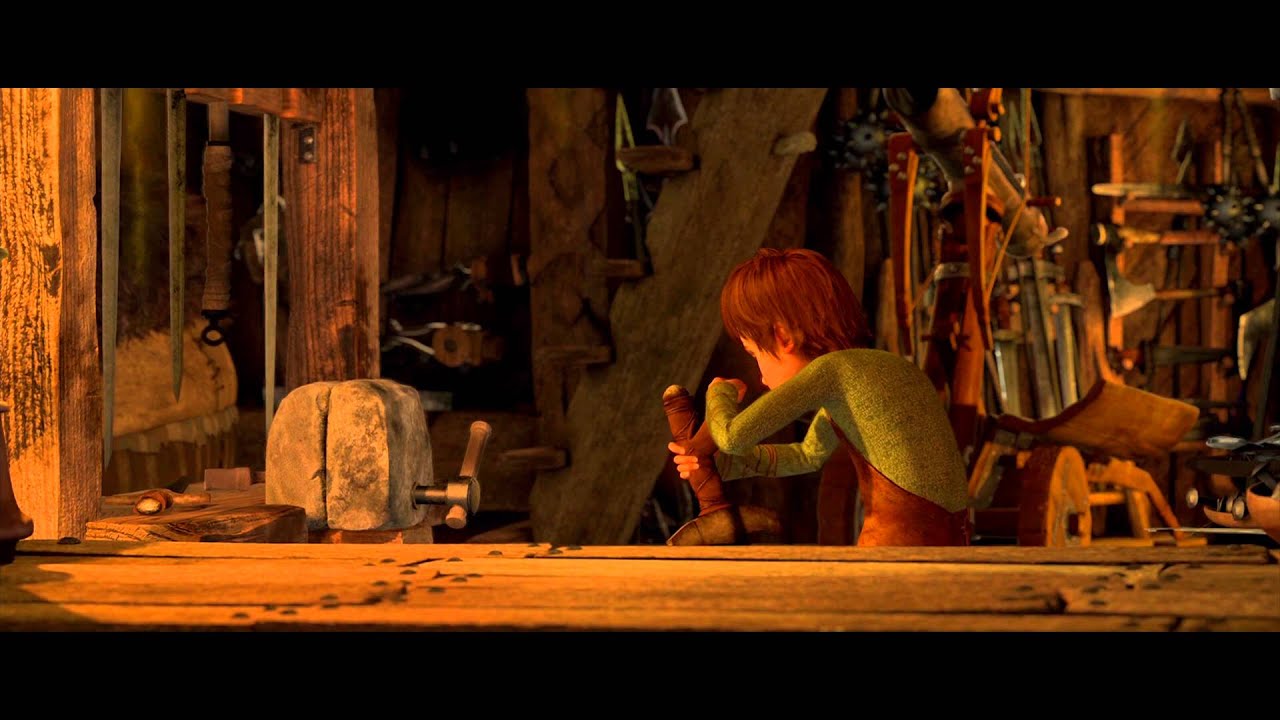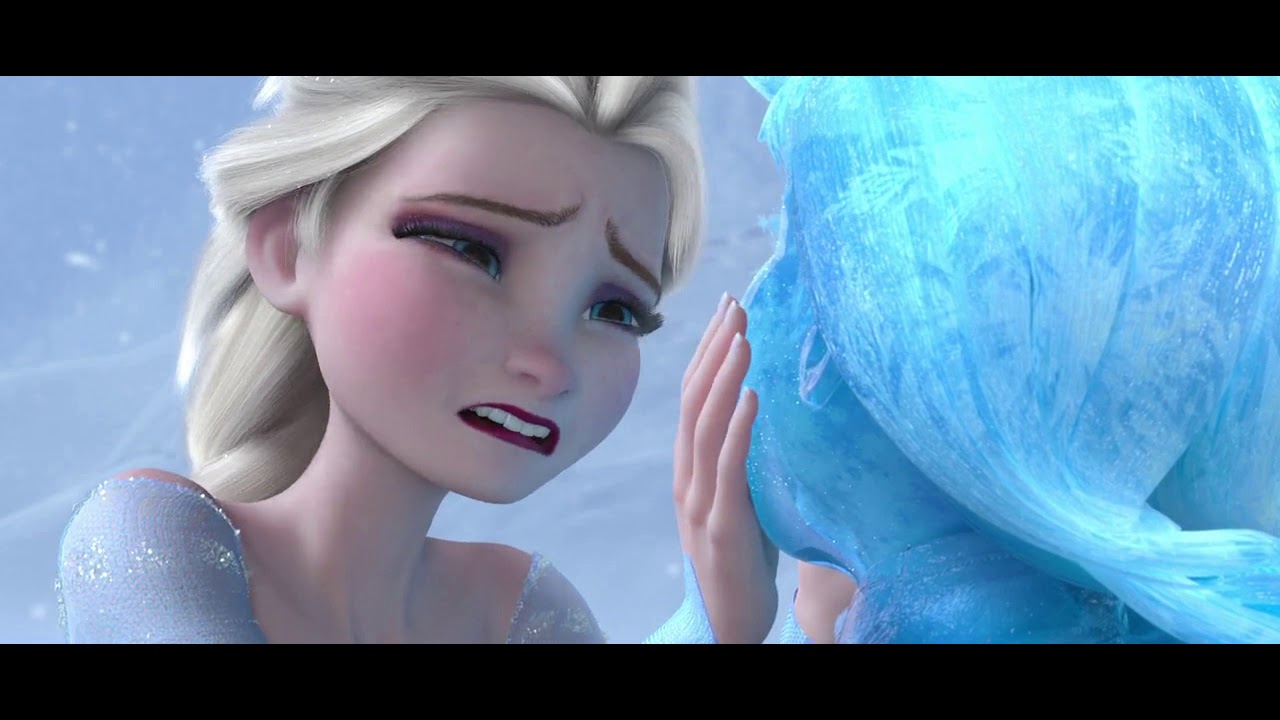Once you have a great story idea, the next step is to write it. But do you want to take your brilliant idea and then write a book that bores readers and causes them to quit reading your book?
Of course not. That's why you need to learn how to write great scenes.

Scenes are the basic building blocks of all storytelling. How do you actually write them, though? And even more, how do you write the kind of scenes that both can keep readers hooked while also building to the powerful climax you have planned for later in the story?
In this article, you'll learn what a scene actually is. You'll explore the six elements every effective scene needs to move the story forward. Then, you'll learn how to do the work of actually putting a scene together, step-by-step.
We'll look at some of the main scene types you need for the various types of stories, and we'll also look at some scene examples so you can better understand how scenes work. Finally, we'll put it all together with a practice exercise.
Table of Contents
Want to jump ahead? Here's a table of contents for this article:
What Is a Scene?
The 4 Criteria of a Scene
Scene Writing and “Show, Don't Tell”
Scene Structure: The 6 Steps to Scene Structure
Scene Structure Examples
Practice Exercise
What Is a Scene? Scene Definition
A scene (in a story) is an event that occurs within a narrative that takes place during a specific time period and has a beginning and an end.
In other words, a scene is a story event or a single unit of storytelling. It is the bedrock of every kind of narrative, from a novel, film, memoir, short story, theatrical play, and graphic novel.
Individual scenes can vary in length, but they tend to be 500 to 2,500 words long. The average book or film has fifty to seventy scenes.
5 Criteria of a Scene
For a section of narrative to be considered a scene, it must meet several criteria.
- A story event. The scene must contain at least one story event.
- A change. A character begins the scene believing one thing, feeling one way, or doing one thing, but by the end of the scene they’re believing, feeling, or doing something else.
- One period of time (e.g. a few minutes in one day). Most scenes will be just a few minutes in one day.
- (In film) One setting. Novels can bend this, but in film, scenes take place in one setting.
- Contains the six elements of plot: exposition, inciting incident, rising action, dilemma, climax, and denouement. We'll discuss these elements in detail below.
How “Show Don't Tell” Impacts Writing Scenes: Show Your Scenes, Tell Your Transitions
One quick thing to note: you might have heard of the common writing advice to “Show, Don't Tell.”
Show, Don’t Tell refers to showing the reader what happens in a story using dialogue, action, or description rather than telling the reader with inner monologue or exposition/narrative.
Scenes are, by their nature, shown. You, the writer, are showing the reader what is happening.
That's why good writers find the most important, most dramatic pieces in their story to show in scenes.
Then, they use telling to link between scenes and give the context, information, and backstory that's still important but not necessarily dramatic.
In other words, show your scenes, tell your transitions. If you don't, if you tell your most important pieces and show your least important, least dramatic moments, you'll end up with jumbled scenes and a jumbled story in general.
What Are the Elements of Scene? 6 Steps to Scene Structure
At The Write Practice, we teach a story structure framework called The Write Structure. It's a universal and timeless way of thinking about story that writers have been applying for thousands of years. (Read our master plot post here.)
Within this framework, there are six elements of plot. These elements don't just occur in every story. They also occur in every successful scene.
So if you want to write a good scene, make sure that it has each of these six structural elements. You can even use these as steps in your scene writing.
Step 1. Exposition: Set the Scene
First, set the scene.
Where are we? Who are we with? What should we, the audience, be seeing or imagining?
Set the scene, usually with description or action, to ground the reader's experience.
Learn more in our full exposition guide here.
Step 2. Inciting Incident: Start the Drama
The inciting incident is an event in a scene that puts the characters into a new situation, upsetting the status quo and beginning the scene's movement.
That situation is the key ingredient to the inciting incident. It can be something going wrong, a complication that arises, or even something going really well. Check out the examples below to get more ideas for your inciting incident.
The inciting incident doesn't have to be a huge pivotal moment. That comes later, in the climax. It can be subtle, but the point is that it builds into a much larger thing.
The key point about the inciting incident of a scene is that it must occur early in a scene, usually within the first five paragraphs.
Don't get me wrong, you still need to set the scene with exposition. But your exposition will either follow the inciting incident or quickly give way to the inciting incident.
You can learn more in our full inciting incident guide here.
Step 3. Rising Action: Throw Rocks at Your Characters
You know that writing advice about getting your characters up a tree, then throwing rocks at them? This is rock-throwing time.
Your inciting incident begins the action and conflict of the scene, but the rising action is where most of the action and conflict builds and takes place.
This will often be the largest section of your scene and builds directly into the dilemma.
Here you start raising the stakes and begin building towards the story’s climactic moment. It’s important that your audience knows exactly what’s at risk, so work to reveal what's important to your characters (e.g. their lives, their relationship, their identity) and why that is at risk now.
Learn more in our full rising action guide here.
Step 4. Dilemma: The Heart of Your Scene
This is the most important (and overlooked) element of every great scene, and it's what all the action in your scene has been building toward.
A dilemma is when a character is put into a situation where they're stuck and have to make a difficult choice with real consequences.
The audience gets to see their character development in action, for better or worse, as they navigate this choice and make their decision.
Here are some example choices:
- Go through the wardrobe into the magical portal or shut the door and miss out
- Take the red pill or the blue pill
- Call the cute crush or stay alone forever
- Fight or flight
- Quit or persevere
- Do what you're told or do what you want
- Share something vulnerable or keep everyone at a distance
These are the dilemmas that drama is made out of, and in some form or other, they belong in every single scene in your story. Together with the previous scenes and the scenes that follow, these are the moments that create the character arc that drives the story forward.
Learn more in our full dilemma guide here.
5. Climax: Create the Moment Out of Highest Action
Coming immediately after the dilemma, the climax shows the consequences of your characters' choices. As such, it is the moment of highest action in the scene.
Taking our example choices from above, here's what might happen next:
- They go through the wardrobe and arrive in a magical kingdom
- They take the red pill and wake up in a creepy, dystopian world with a tube down their throats
- They call the cute crush and then crash and burn
- They fight and are mauled by a giant bear
- They quit, only to be visited by an angel who offers to show them the consequences of quitting
- They do what they want and get into a fight with a dragon, which results in burning down the village
- They decide to share and finally feel truly accepted and known for the first time in their lives
You see how it works, right? You start the movement, raise the stakes, create a dilemma, and pay it all off with a climax full of dramatic energy.
If you did it right, this is either the best or worst moment in your scene. This is also where to insert any plot twists you can think of.
Learn more in our full climax guide here.
Step 6. Denouement: Pause to Take Things In
But your scene isn't over just yet. Finally, you have to create a brief pause, often only a paragraph or three, to allow the audience to take in what just happened and prepare the ground for the next scene.
If the exposition is the “before,” the denouement, also called the resolution, is the “after.”
You don't need much writing here, just a few paragraphs, but this element is key to the rhythm of your storytelling.
Learn more in our full denouement guide here.
Scene Structure Examples
Now that you know the steps, let's look at a few examples from popular scenes to better understand how this works.
How to Train Your Dragon: Opening Scene Structure
For reference, you can watch the scene here:
I love this scene and this film as a whole (the books are great too!). It instantly sets up not just the stakes of the scene, but the story as a whole, and in general, has a nearly perfect structure.
Let's break it into the six elements of plot that we just discussed.
Exposition: “This is Berk.” Bucolic, pastoral, peaceful. Narrated by Hiccup, the viewpoint character.
Inciting incident: Actually, nope—there are dragons stealing the sheep.
Rising action: Dragons burn things, people fight dragons, we meet the story's cast of characters, and most of all, we get to know Hiccup, the protagonist, who really wants to prove himself. But Hiccup is told he's not allowed to fight the dragons.
Dilemma: To do what he's told, stay put, and risk being looked down on his whole life OR to do what he wants, go fight with his fancy machine, and risk dying and/or humiliating himself?
Climax: Hiccup does what he wants, hits a dragon, gets into a fight with another dragon, and then burns down most of the village.
Denouement: No one believes he hit the dragon, and he is humiliated in front of the village.
Note especially the location of the dilemma, which occurs about halfway through the scene and comes to a head immediately. It's subtle, implied more than it is spelled out specifically, and yet it creates the drama that follows.
Frozen: Climactic Scene Structure
For reference, you can watch the scene here (spoiler alert in case you somehow have never seen this film!):
I like to use this scene because it perfectly displays how a dilemma works.
Exposition: Princess Anna is dying, about to become frozen after being struck by Princess Elsa's magic.
Inciting Incident: With an act of true love, she can be cured, and Kristoff is running toward her to give her the “kiss of true love.”
Rising Action: There's a storm, so this is all very difficult. Oh, and Prince Hans is about to kill her sister.
Dilemma: Princess Anna looks both ways, not sure what to choose. Does she run to Kristoff and save herself but allow her sister to be killed OR does she save her sister and sacrifice herself?
Climax: She chooses to save her sister, running to stop Prince Hans and freezing in the process. The storm immediately ceases.
Denouement: Princess Anna herself supplied the act of true love, removing the magic's curse and restoring her to life.
Again, pay special attention to the dilemma, which lasts for just a few seconds as she pauses, looking both ways, trying to decide. The stakes couldn't be higher (which is good because this is the climax of the story), and her choice immediately results in not just the climax of the scene, but the climax of the entire story.
How to Write a Great Scene Every Time
Writing compelling scenes doesn't require you to be a genius or know everything there is about writing.
You just need to follow the six scene tasks: exposition, inciting incident, rising action, dilemma, climax, and denouement.
If you just do that, you'll be able to reliably craft a perfect scene that, when brought together, will end up with an amazing story.
So go get writing!
Which of these six steps and elements do you find easiest? Which is most difficult or confusing? Let us know in the comments.
PRACTICE
Now that you know how a perfect scene works, let's put it to practice. Today, I have two scene prompts for your practice:
- Study a scene from one of your favorite books or films, finding the six elements of plot.
- Outline a scene you've written or a new scene using the six elements of plot.
Take fifteen minutes to practice. Once you've created your outline, share it in the Pro Practice Workshop.
And if you share, be sure to give feedback to at least three other writers.
Happy writing!
Joe Bunting is an author and the leader of The Write Practice community. He is also the author of the new book Crowdsourcing Paris, a real life adventure story set in France. It was a #1 New Release on Amazon. Follow him on Instagram (@jhbunting).
Want best-seller coaching? Book Joe here.



These tips are gold!
I am doing a professional writing course, and I was looking for something to help me understand writing in an easier way. I came here and was blown away. You have explained it better.
No disrespect to them at all, I just needed a simple and easy explanation to help my understanding. This is an absolutely brilliant explanation. I am now crystal clear on what I have to do. You’ve stopped me banging my head on the wall after months! Lots and lots of gratitude.
Hi